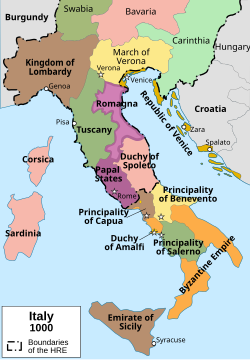John XVII | |
|---|---|
| Bishop of Rome | |
| Church | Catholic Church |
| Papacy began | 16 May 1003 |
| Papacy ended | 6 November 1003 |
| Predecessor | Sylvester II |
| Successor | John XVIII |
| Personal details | |
| Born | Giovanni Sicco |
| Died | 6 November 1003 |
| Other popes named John | |

Pope John XVII (Latin : Ioannes XVII; died 6 November 1003 [1] ), born John Sicco, was the bishop of Rome and nominal ruler of the Papal States for about seven months in 1003. He was one of the popes chosen and eclipsed by the patrician John Crescentius.